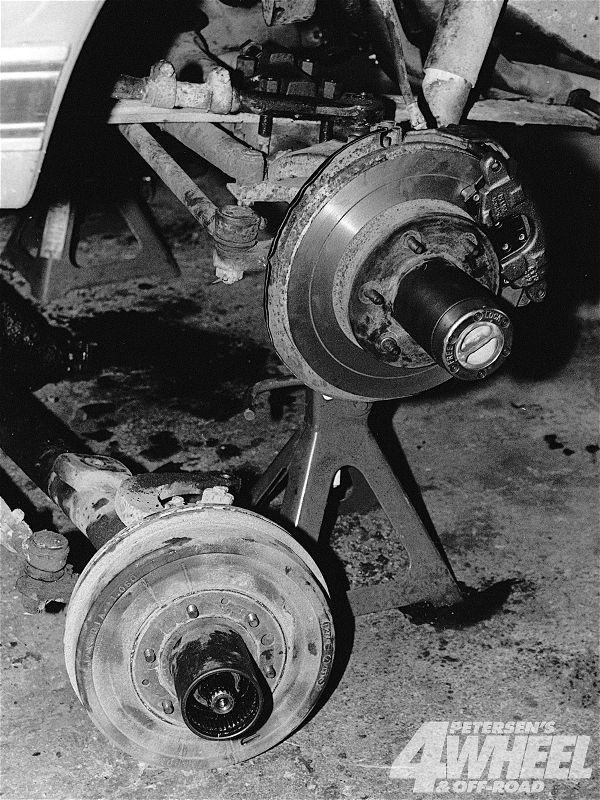
If you already own or are thinking of buying an older 4x4 with a drum-brake Dana 44 up front-and that encompasses a lot of very desirable rigs-then don't touch that dial.

This is mainly a drum-to-disc-swap article, and we'll get to that. But even if you're not a disc brake fan, sooner or later you'll probably want to upgrade or swap some Dana 44 parts. Or maybe you'll snap an axleshaft or a U-joint.
When any of the above happens, you may have a close encounter with the all-44s-are-alike myth. Of course, it's pretty common knowledge that Ford 44s are different from GM 44s, which are different from Dodge 44s, which are different from Scout 44s. But we're talking specifically about the widespread misconception that all '78-and-older, open-knuckle General Motors Dana 44s-1/2-tons and 3/4-tons-are basically identical inboard of the steering knuckles. Of course, wheel hubs (six or eight lugs), brake parts (drum or disc), gear ratios, and maybe a spring pad or a shock mount here or there may differ. But according to the myth, axlehousing dimensions, axleshafts, U-joints, and steering knuckles should be the same. And swapping later-model Dana 44 disc brakes onto an earlier open-knuckle drum brake axle should be a slam-dunk-easy deal.
Wrong-on both the interchangeability and the swapping-ease counts. We asked Joel Snider and Joe Shaff of Stage West 4-Wheel Drive to show us why and what you can do to achieve the swaps you want. And while we're concentrating on GM 44s, it's a good bet that many of the issues apply to Dodges and Fords as well.
PhotosView Slideshow
















